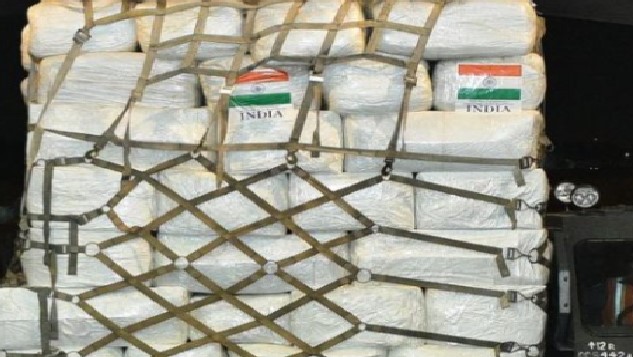
(Photo : PIB)
- The World Food Programme (WFP) urgently needs $404 million to address escalating hunger in South Sudan.
- The appeal follows a report identifying South Sudan as a high concern for widespread starvation.
- The WFP has no food supplies in South Sudan and needs funds to frontload assistance and avoid expensive airdrops.
- The WFP's appeal is crucial to prevent a worsening hunger crisis and highlights the need for global cooperation.
The World Food Programme (WFP) has issued an urgent appeal for $404 million to bolster its humanitarian assistance operations in South Sudan in 2025, amidst warnings of escalating hunger. The appeal is a proactive measure to pre-emptively address the potential famine and spiralling operational costs beyond 2025.
Shaun Hughes, the acting Country Director for South Sudan, emphasized the urgency of the situation, stating that the conversion of pledged donor funds into food for the hungry can take months. He highlighted the logistical challenges posed by the country's limited road networks, which are often impassable for much of the year, particularly in the east and central regions where food insecurity is most acute.
Hunger Hotspots and the Impending Crisis
This appeal comes in the wake of the Hunger Hotspots report, jointly released by the WFP and the Food and Agriculture Organization. The report identifies South Sudan as a country of highest concern, where immediate humanitarian action is crucial to prevent widespread starvation and death.
The report further reveals that acute food insecurity in South Sudan, where 56% of the population already faces a crisis-level or worse hunger situation, is likely to deteriorate as the 2025 lean season approaches, typically starting in May. The causes of this deterioration are multifaceted, including high food prices, a severe economic crisis, conflict and insecurity, cross-border movements from Sudan, and flooding.
The WFP currently has no food supplies in South Sudan to preposition for next year's humanitarian response and needs $404 million to frontload assistance. Failure to secure these funds will force the WFP to rely on expensive airdrops later in the year to reach isolated communities who are facing the most severe levels of hunger and depend on humanitarian food assistance. Funds received before the end of this year will enable the WFP to preposition food by road in remote hunger-hit areas during the brief dry season window from December to April.
Logistical Challenges and the Need for Early Funding
Hughes stressed that airdrops are always the last resort for WFP. Every dollar spent on planes is a dollar not spent on food for hungry people. The solution, he suggests, is simple: get food to communities by road before they are cut off by heavy rain and flooding. The delivery options for humanitarian assistance in South Sudan include road, river, and airdrops.
However, road transport is only feasible for a couple of months of the year, while river convoys are slow and have limited capacity. Airdrops in South Sudan can be as much as 17 times more expensive than road transport and deliver much less cargo in the same timeframe.
The lean season in South Sudan runs from May to August and is the period just before harvest when communities have the least to eat and hunger typically rises. This is a recurring issue, and the WFP is working tirelessly to mitigate the effects of this annual crisis. The WFP's operations are vast and complex. Each day, the organization has up to 5,000 trucks, 132 aircraft, and 20 ships on the move, delivering food and other assistance.
The organization also uses an online optimization tool, Optimus, which helps identify the most cost-effective way to reach the people WFP serves. It has been used in 44 country offices, resulting in more than US$50 million in savings since 2015.









